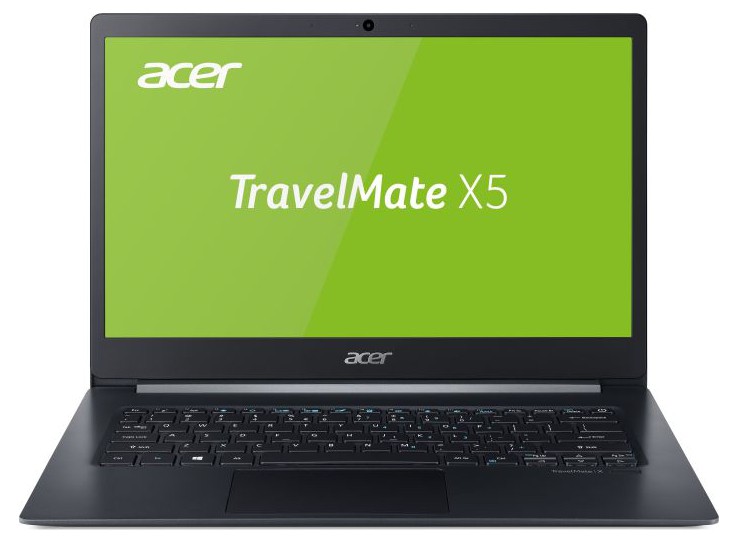Acer TravelMate X514-51 review – the lightest TravelMate ever made
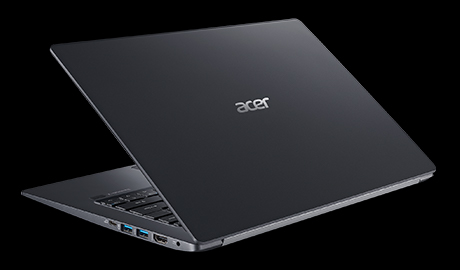 Say hello to the business version of the Acer Swift 5 (SF514-52). Today we are going to look at essentially the same laptop, carrying different branding and an updated CPU. At 970 grams Acer TravelMate X514-51 is the lightest TravelMate ever made.
Say hello to the business version of the Acer Swift 5 (SF514-52). Today we are going to look at essentially the same laptop, carrying different branding and an updated CPU. At 970 grams Acer TravelMate X514-51 is the lightest TravelMate ever made.
If you like the brand and the TravelMate marque, this may just be the notebook for you. With the help of the appropriate software utilities, small form factor, and high-end ULV CPU, you should have a sufficient business buddy, that will represent you flawlessly throughout all your meetings. Or at least it should. Since it is our job to evaluate the pros and cons of hardware, we won’t be lenient towards the TravelMate X514-51 and we are going to treat it as if it is not as fragile as it is.
You can check the prices and configurations in our Specs System: https://laptopmedia.com/series/acer-travelmate-x514-51/
Contents
Specs Sheet
Acer TravelMate X514-51 technical specifications table
What’s in the box?
Sadly, we got our sample unit without a retail box, so we can’t really tell you what to expect if you eventually buy this laptop. However, its power brick is rated at 45W and is pretty small as well.
Design and construction
As we already mentioned TravelMate X514-51 is physically a rebranded Acer Swift 5 (SF514-52). It has the same design features, measurements, and weight. It is even built from the same material as the latter. However, it comes with a blue keyboard backlight, instead of the golden colored white lit keyboard of the Swift 5.
Because of the low weight, it is impossible to open the lid with just a single hand. When you managed to open it up, you can push it all the way to a fully flat position, although this notebook doesn’t have the touchscreen feature.
Moving to the keyboard, we experienced a clicky, but short-traveled keys which should suffice a businessman’s needs (still better than a MacBook). No more than a centimeter beneath the spacebar you’ll find the touchpad. It is very accurate and responsive and the clicks feel intuitive. Further, on the right, you can see a fingerprint scanner which is definitely fast but not the best on the market.
A quick look at the bottom plate reveals the equality of Acer Swift 5 (SF514-52) and TravelMate X514-51.
| Width | Length | Height | Weight | |
|---|---|---|---|---|
| Acer Swift 5 (SF514-52) | 329 mm (12.95″) | 228 mm (8.98″) | 15 mm (0.59″) | 0.97 kg (2.1 lbs) |
| ASUS ZenBook 14 UX433 | 319 mm (12.56″) (-3%) | 199 mm (7.83″) (-13%) | 15.9 mm (0.63″) (+6%) | 1.09 kg (2.4 lbs) (+12%) |
| Acer Swift 5 (SF514-52) | 329 mm (12.95″) | 228 mm (8.98″) | 15 mm (0.59″) | 0.97 kg (2.1 lbs) |
Ports
Most of the port selection of the TravelMate X514-51 is located on the right side of the notebook, as the left is only home to the 3.5 mm headphone jack. The rest of the I/O includes – an HDMI connector, two USB Type-A 3.1 (Gen. 1) ports and a single USB Type-C 3.1 (Gen. 2). Sadly, the power connector is the normal barrel plug, opposing to the Type-C trend.
Display quality
Acer TravelMate X514-51 is equipped with a Full HD IPS display with a model number Innolux N140HCE-EN2 (CMN14D5). Its diagonal size is 14.0 inches (35.56 cm). The screen ratio is 16:9 and the resolution is 1920 x 1080p which translates into a pixel density of 157 PPI. The pixel pitch is – 0.161 х 0.161 mm. The screen can be considered Retina when viewed from further than 22 inches (55 cm). From this distance, the individual pixels become indistinguishable for the average human eye.

Viewing angles are excellent. We offer images to evaluate quality.

The maximum measured brightness is 300 nits (cd/m2) in the middle of the screen and 290 nits (cd/m2) average across the surface with a maximum deviation of 7%. The Correlated Color Temperature on a white screen and at maximum brightness is 7370K (average) – colder than the optimal 6500K for sRGB. The average color temperature through the grey scale before profiling is 7320K.
In the illustration below you can see how the display performs from a uniformity perspective. In other words the leakage of light from the light source. The illustration below shows how matters are for operational brightness levels (approximately 140 nits) – in this particular case at 46% Brightness (White level = 142 cd/m2, Black level = 0.11 cd/m2).
Values of dE2000 over 4.0 should not occur, and this parameter is one of the first you should check if you intend to use the laptop for color sensitive work (a maximum tolerance of 2.0 ). The contrast ratio is good – 1250:1 (1100:1 after profiling).

Color reproduction
To make sure we are on the same page, we would like to give you a little introduction to the sRGB color gamut and the Adobe RGB. To start, there’s the CIE 1976 Uniform Chromaticity Diagram that represents the visible specter of colors by the human eye, giving you a better perception of the color gamut coverage and the color accuracy.
Inside the black triangle, you will see the standard color gamut (sRGB) that is being used by millions of people in HDTV and on the web. As for the Adobe RGB, this is used in professional cameras, monitors etc for printing. Basically, colors inside the black triangle are used by everyone and this is the essential part of the color quality and color accuracy of a mainstream notebook.
Still, we’ve included other color spaces like the famous DCI-P3 standard used by movie studios, as well as the digital UHD Rec.2020 standard. Rec.2020, however, is still a thing of the future and it’s difficult for today’s displays to cover that well. We’ve also included the so-called Michael Pointer gamut, or Pointer’s gamut, which represents the colors that naturally occur around us every day.
The yellow dotted line shows Acer TravelMate X514-51’s color gamut coverage.
Its display can show 98% of the sRGB/ITU-R BT.709 (web/HDTV standard) in CIE1976.

Our “Design and Gaming” profile delivers optimal color temperature (6500K) at 140 cd/m2 luminance and sRGB gamma mode.
We tested the accuracy of the display with 24 commonly used colors like light and dark human skin, blue sky, green grass, orange etc. You can check out the results at factory condition and also, with the “Design and Gaming” profile.
Below you can compare the scores of Acer TravelMate X514-51 with the default settings (left), and with the “Gaming and Web design” profile (right).


The next figure shows how well the display is able to reproduce really dark parts of an image, which is essential when watching movies or playing games in low ambient light.
The left side of the image represents the display with stock settings, while the right one is with the “Gaming and Web Design” profile activated. On the horizontal axis, you will find the grayscale and on the vertical axis – the luminance of the display. On the two graphs below you can easily check for yourself how your display handles the darkest nuances but keep in mind that this also depends on the settings of your current display, the calibration, the viewing angle, and the surrounding light conditions.

Response time (Gaming capabilities)
We test the reaction time of the pixels with the usual “black-to-white” and “white-to-black” method from 10% to 90% and vice versa.
We recorded Fall Time + Rise Time = 31 ms – expected from a 60Hz IPS panel.

PWM (Screen flickering)
Pulse-width modulation (PWM) is an easy way to control monitor brightness. When you lower the brightness, the light intensity of the backlight is not lowered, but instead turned off and on by the electronics with a frequency indistinguishable to the human eye. In these light impulses, the light/no-light time ratio varies, while brightness remains unchanged, which is harmful to your eyes. You can read more about that in our dedicated article on PWM.
Acer TravelMate X514-51’s display is free of flickering above 75 nits. Up until then, it uses PWM with a frequency of 25 kHz which is relatively high and should be unnoticeable for the people with less sensitive eyes. Either way, the display is safe for extended periods of use in this aspect.

Blue light emissions
Installing our Health-Guard profile not only eliminates PWM but also reduces the harmful Blue Light emissions while keeping the colors of the screen perceptually accurate. If you’re not familiar with the Blue light, the TL;DR version is – emissions that negatively affect your eyes, skin and your whole body. You can find more information about that in our dedicated article on Blue Light.
Conclusion
Acer TravelMate X514-51’s display has a Full HD panel with a good contrast ratio, comfortable viewing angles and wide sRGB coverage (98%). With the Gaming and Web design profile, you can achieve super accurate (with the web standard) colors with an average dE of around 0.7. In addition to that, it doesn’t use aggressive PWM for adjusting its brightness.
Buy our profiles
Since our profiles are tailored for each individual display model, this article and its respective profile package are meant for Acer TravelMate X514-51 configurations with 14.0″ Innolux N140HCE-EN2 (CMN14D5) (FHD, 1920 × 1080) IPS.
*Should you have problems with downloading the purchased file, try using a different browser to open the link you’ll receive via e-mail. If the download target is a .php file instead of an archive, change the file extension to .zip or contact us at [email protected].
Read more about the profiles HERE.
In addition to receiving efficient and health-friendly profiles, by buying LaptopMedia's products you also support the development of our labs, where we test devices in order to produce the most objective reviews possible.

Office Work
Office Work should be used mostly by users who spend most of the time looking at pieces of text, tables or just surfing. This profile aims to deliver better distinctness and clarity by keeping a flat gamma curve (2.20), native color temperature and perceptually accurate colors.

Design and Gaming
This profile is aimed at designers who work with colors professionally, and for games and movies as well. Design and Gaming takes display panels to their limits, making them as accurate as possible in the sRGB IEC61966-2-1 standard for Web and HDTV, at white point D65.

Health-Guard
Health-Guard eliminates the harmful Pulse-Width Modulation (PWM) and reduces the negative Blue Light which affects our eyes and body. Since it’s custom tailored for every panel, it manages to keep the colors perceptually accurate. Health-Guard simulates paper so the pressure on the eyes is greatly reduced.
Get all 3 profiles with 33% discount
Sound
Acer TravelMate X514-51’s sound is not very loud, although it has relatively good quality. Its low and mid tones have some deviations, whether the highs are clear.

Drivers
All of the utilities and drivers you may need for your TravelMate X514-51 can be found here: https://www.acer.com/ac/en/GB/content/support-product/7873
Storage performance
Even though, SSD model choice is region dependent, here is what our unit came with: 256 GB NVMe drive with a not-so-fancy model number Kingston RBUSNS8153P3256GJ1. Sequential Read and Write speeds were respectively 1.59 GB/s and 0.89 GB/s.
| SSD model (240-256GB variants) | Max.Seq.Read (GB/s) | Max.Seq.Write (GB/s) | IOPS 4K Read | IOPS 4K Write | Latency Read (ms) | Latency Write (ms) |
| Kingston RBUSNS8153P3256GJ1 | 1.59 | 0.89 | 11068 | 29371 | 0.046 | |
| Toshiba KBG30ZMS256G | 1.48 | 0.24 | 8091 | 19820 | 1.564 | 0.309 |
| Samsung PM981 | 3.41 | 1.88 | 12199 | 27961 | 0.040 | 0.035 |
| LITE-ON CA3-8D512-Q11 | 3.18 | 1.66 | 9864 | 25136 | 0.171 | 0.041 |
| Intel Pro 6000p Series | 1.83 | 0.59 | 7792 | 28266 | 0.075 | 0.033 |
Battery
Now, we conduct the battery tests with Windows Better performance setting turned on, screen brightness adjusted to 120 nits and all other programs turned off except for the one we are testing the notebook with. The battery found inside this laptop is the same as the one we tested inside the Acer Swift 5 (SF514-52) some time ago.
Here we got one of the highest scores we ever achieved during web browsing – around 12 hours and a half. Video playback times are also strong, but less impressive – 7 hours and a half.
In order to simulate real-life conditions, we used our own script for automatic web browsing through over 70 websites.
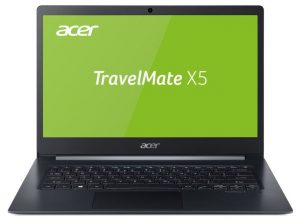
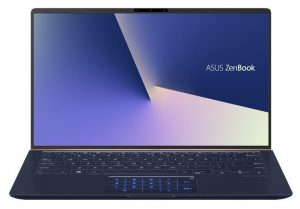

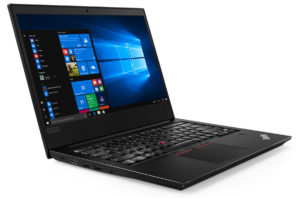
For every test like this, we use the same video in HD.




CPU options
We got Acer TravelMate X514-51 as a sample unit so we are not quite sure what is going to be the whole CPU range. However, what we know, is that Intel Core i5-8265U is for sure appearing, as the device we received had it onboard. The main difference between itself and its predecessor – the Core i5-8250U is the maximum Turbo frequency – 500 MHz more on the Core i5-8265U.
Results are from the Cinebench 20 CPU test (the higher the score, the better)
Results are from our Photoshop benchmark test (the lower the score, the better)
GPU options
Similarly to its Swift compatriots, TravelMate X514-51 is not going to enjoy the benefits of a dedicated GPU – only the Intel UHD Graphics 620 is going to appear here.
Results are from the 3DMark: Fire Strike (Graphics) benchmark (higher the score, the better)
Results are from the Unigine Superposition benchmark (higher the score, the better)
Gaming tests
Intel UHD Graphics 620 on the TravelMate X514-51 is underperforming, mainly because of the cooling obstacles.

| CS:GO | HD 1080p, Low (Check settings) | HD 1080p, Medium (Check settings) | HD 1080p, MAX (Check settings) |
|---|---|---|---|
| Average FPS | 44 fps | 26 fps | – |

| DOTA 2 | HD 1080p, Low (Check settings) | HD 1080p, Normal (Check settings) | HD 1080p, High (Check settings) |
|---|---|---|---|
| Average FPS | 62 fps | 31 fps | 15 fps |

| Grand Theft Auto V (GTA 5) | HD 768p, Normal (Check settings) | HD 768p, High (Check settings) | HD 768p, Very High (Check settings) |
|---|---|---|---|
| Average FPS | 26 fps | – fps | – fps |
Temperatures and comfort
Max CPU load
In this test we use 100% on the CPU cores, monitoring their frequencies and chip temperature. The first column shows a computer’s reaction to a short load (2-10 seconds), the second column simulates a serious task (between 15 and 30 seconds), and the third column is a good indicator of how good the laptop is for long loads such as video rendering.
Average core temperature (base frequency + X); CPU temp.
| Intel Core i5-8265U (15W TDP) | 0:02 – 0:10 sec | 0:15 – 0:30 sec | 10:00 – 15:00 min |
|---|---|---|---|
| Acer TravelMate X514-51 | 1.81 GHz (B+13%) @ 65°C | 1.86 GHz (B+14%) @ 74°C | 1.37 GHz @ 70°C |
| Acer Aspire 5 A515-52G-55KB | 3.07 GHz (B+92%) @ 93°C | 1.84 GHz (B+15%) @ 63°C | 1.87 GHz (B+17%) @ 67°C |
Being kept inside such a tight chassis there are no ways around thermal throttling. It’s either going to be loud as a wich burned by the Spanish Inquisition, or it is going to throttle. Given the fact that TravelMate X514-51 is a business laptop, the first one is just not an option. This resulted in average frequency for the first part of the torture of just 1.81 GHz at just 67C. At the end of the test, we saw an average of 1.37 GHz at 70C. We are wondering if a Y-series CPU wouldn’t be more suitable for this machine.
Gaming comfort
The coolest spot of the notebook is the palm-rest area, while the hottest point is around the “O” key of the keyboard. While the body’s warmth is not too much for the hands and the 45.6C are relatively low for a laptop of this form factor.


Verdict
Since we are talking about a sample unit here, you should keep in mind that Acer might polish some sharp edges until they release the laptop. However, all in all, we have positive feedback of the TravelMate X514-51, as two of the main requirements for a successful business companion have been not only met but exceeded. We are talking about the portability – the 15 mm profile and weight under 1 kg speak for themselves; and the battery life.
Its chassis has been able to handle a battery which can deliver up to 12 hours and a half of web browsing time – not many laptops can brag with such results. However, it still falls a little short of the ZenBook 14 UX433 – frankly, in too many ways.
First of all – keyboard and input devices – the key travel is just too short. And when we try to justify it with its thin profile – look at the same ZenBook 14 UX433 which is a millimeter thicker, but holds much longer keystrokes and better keyboard in general.
Secondly – the hardware performance. We would certainly give the TravelMate X514-51 an Editor’s Choice award if it wasn’t for the poor performance. Although it is not going to present any significant problems during day-to-day work, the moment you try a more power hungry program, you’ll notice the impotency of the cooling altogether.
And finally, we have the screen – which is one big white mark for this device. Relatively high maximum brightness, comfortable viewing angles, super accurate colors, which come ever so close to the standard when calibrated with our Gaming and Web design profile. What a pity that the hardware is setting you back from doing design work on this laptop.
Pros
- Lasts up to 12 hours and a half of web browsing
- Slim and light magnesium alloy body
- When the Gaming and Web design profile is applied average dE drops to under 1.0 (Innolux N14-HCE-N2)
- Lacks aggressive PWM for brightness adjustment (Innolux N14-HCE-N2)
- Covers around 98% of the sRGB color gamut
Cons
- The fan kicks in during slightest of loads
- Huge thermal incapability
- Lack of Type-C charging
- Coil whine when copying files
You can check the prices and configurations in our Specs System: https://laptopmedia.com/series/acer-travelmate-x514-51/

